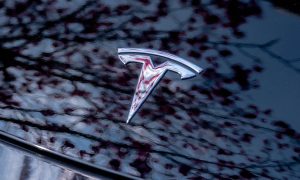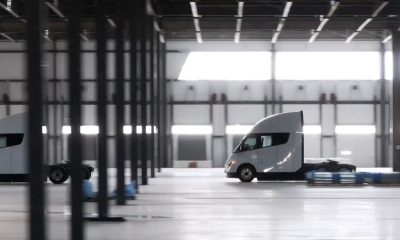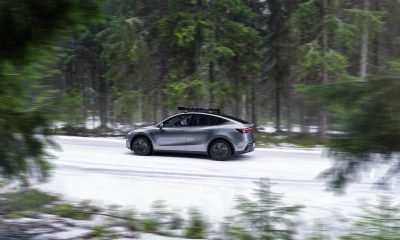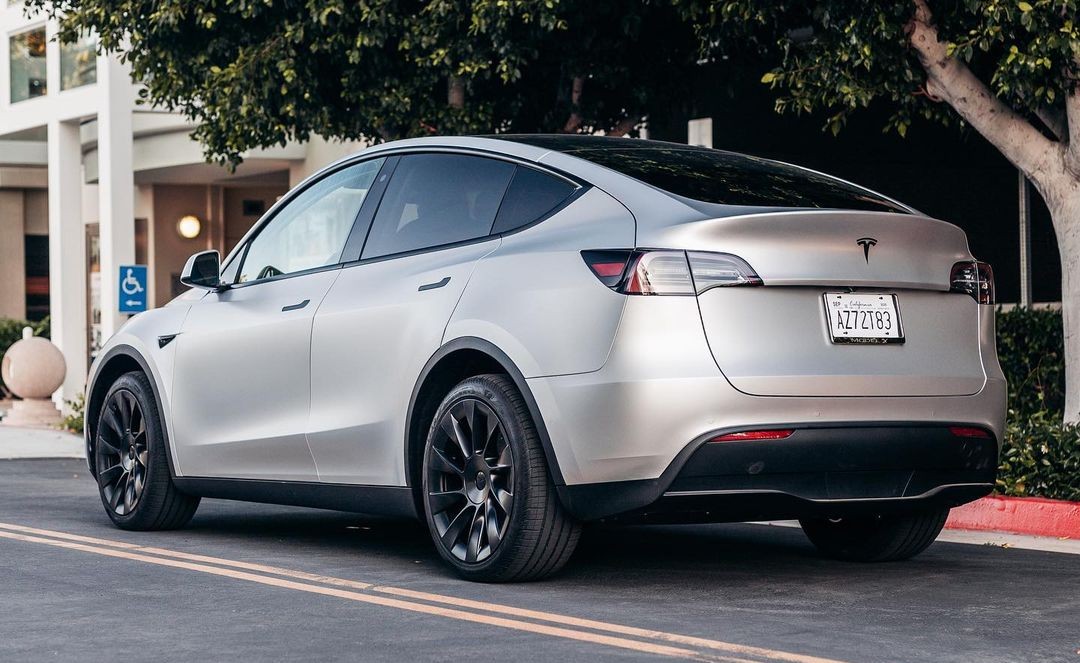

News
Tesla’s Safety Score system will be key to in-house insurance’s affordability
Tesla’s Safety Score system may still be in its early stages, but it seems to be a key part of some of the company’s upcoming products. This is particularly true for the Safety Score system, which was recently launched ahead of FSD Beta’s expansion. As observed by Tesla owners who signed up for the company’s in-house insurance in Texas, their rates would be directly tied to their respective Safety Scores.
This is something that would be expected as Tesla expands its in-house insurance service to other states, and perhaps even abroad. As mentioned by CFO Zachary Kirkhorn during the recently-held Q3 2021 earnings call, insurance costs are generally not the fairest thing in the market, with low-risk owners typically overpaying on their rates to subsidize drivers who were riskier on the road. Kirkhorn explained that the car insurance market, in its current state, uses limited data. Fortunately, data just happens to be one of Tesla’s biggest strengths.
“We entered the insurance market kind of unintentionally, I would say. Our customers were coming to us, complaining that the price of traditional insurance was too high and it was reducing the affordability of a Tesla… As we started to do more research, essentially, the tools by which the insurance is traditionally calculated are optimized based upon the existing data, but the existing data is limited. So there’s a focus on things like marital status or age or other attributes like that. Accident history is a good one, etc.
“But what essentially happens here is customers who are low risk and don’t actually file many claims end up overpaying on their insurance relative to their cost. That overpayment then goes to riskier customers who are essentially being subsidized. And, you know, as we looked at this and we looked at the data, we thought this just doesn’t seem like it’s fair. At Tesla, because our cars are connected, because they are essentially computers on wheels, there’s enormous amounts of data that we have available to us to be able to assess the attributes of a driver who’s operating that car and whether those attributes correlate with safety because we do get a signal when a car has been in an accident,” the CFO remarked.
Tesla then proceeded to analyze literally billions of miles of driving history from its fleet, and from this study came a model that was able to predict with decent accuracy the probability of collisions over time. But this was just the beginning. Tesla has learned and is continuing to learn a lot more about its fleet, particularly as the company rolled out its Safety Score system and the FSD Beta Enrollment Program.
“We have almost 150,000 cars currently using a safety score. And I believe the latest data is over 100 million miles of driving. So we’ve been able to go back and analyze that data. And we’ve learned two things coming from that. The first is that the probability of collision for a customer using a safety score versus not is 30% lower. It’s a pretty big difference. It means that the product is working and customers are responding to it. The second thing that we’ve looked at is what is the probability of collision based upon actual data as a function of a driver safety score.
“And that is aligning with our models. Most notably, if you’re in the top tier of safety compared to lower tiers, there’s multiple X difference in probability of collision based upon actual data. So this is a very new and very exciting frontier for us. I know that was long-winded, but I — we spent a lot of time on this and we put a lot of thought into it… So we’re very excited about it. We’re excited about individual risk-based pricing. We’re excited about the ability for folks to become safer and, as a result, save money. And it feeds into our priority of a company — of building the safest products in the world,” Kirkhorn concluded.
Don’t hesitate to contact us with news tips. Just send a message to tips@teslarati.com to give us a heads up.
News
Tesla cleared in Canada EV rebate investigation
Tesla has been cleared in an investigation into the company’s staggering number of EV rebate claims in Canada in January.
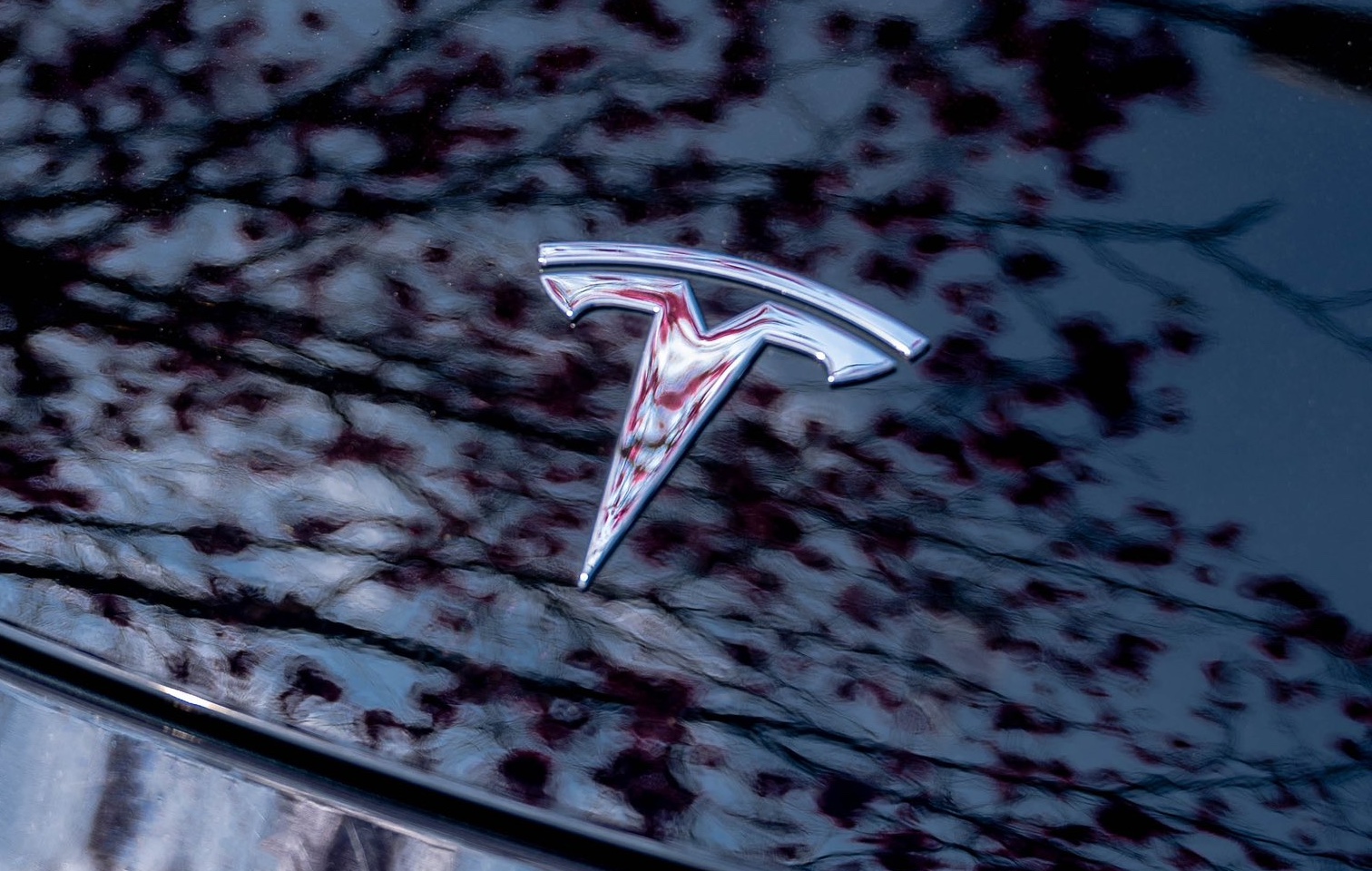
Canadian officials have cleared Tesla following an investigation into a large number of claims submitted to the country’s electric vehicle (EV) rebates earlier this year.
Transport Canada has ruled that there was no evidence of fraud after Tesla submitted 8,653 EV rebate claims for the country’s Incentives for Zero-Emission Vehicles (iZEV) program, as detailed in a report on Friday from The Globe and Mail. Despite the huge number of claims, Canadian authorities have found that the figure represented vehicles that had been delivered prior to the submission deadline for the program.
According to Transport Minister Chrystia Freeland, the claims “were determined to legitimately represent cars sold before January 12,” which was the final day for OEMs to submit these claims before the government suspended the program.
Upon initial reporting of the Tesla claims submitted in January, it was estimated that they were valued at around $43 million. In March, Freeland and Transport Canada opened the investigation into Tesla, noting that they would be freezing the rebate payments until the claims were found to be valid.
READ MORE ON ELECTRIC VEHICLES: EVs getting cleaner more quickly than expected in Europe: study
Huw Williams, Canadian Automobile Dealers Association Public Affairs Director, accepted the results of the investigation, while also questioning how Tesla knew to submit the claims that weekend, just before the program ran out.
“I think there’s a larger question as to how Tesla knew to run those through on that weekend,” Williams said. “It doesn’t appear to me that we have an investigation into any communication between Transport Canada and Tesla, between officials who may have shared information inappropriately.”
Tesla sales have been down in Canada for the first half of this year, amidst turmoil between the country and the Trump administration’s tariffs. Although Elon Musk has since stepped back from his role with the administration, a number of companies and officials in Canada were calling for a boycott of Tesla’s vehicles earlier this year, due in part to his association with Trump.
News
Tesla Semis to get 18 new Megachargers at this PepsiCo plant
PepsiCo is set to add more Tesla Semi Megachargers, this time at a facility in North Carolina.
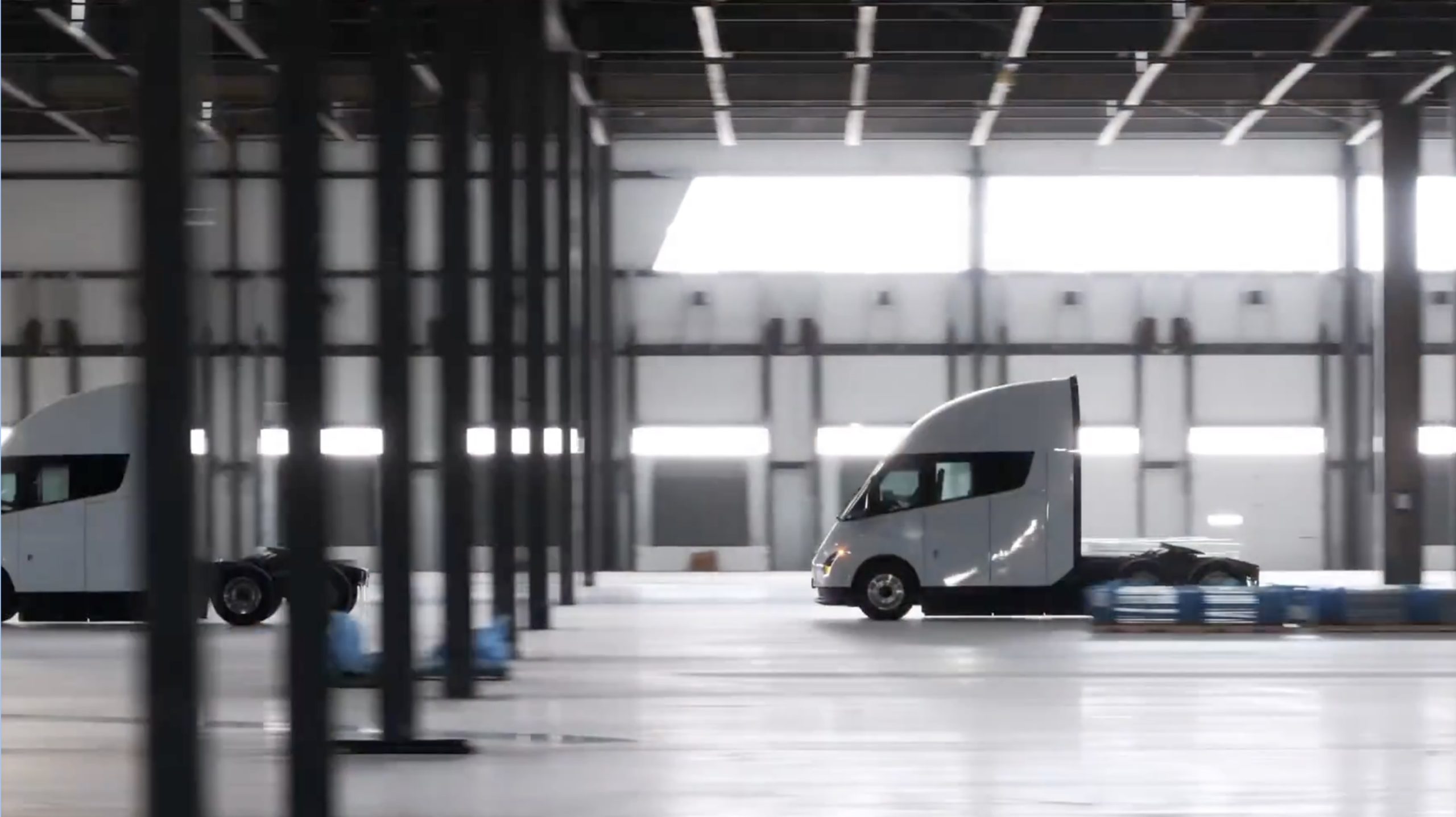
Tesla partner PepsiCo is set to build new Semi charging stations at one of its manufacturing sites, as revealed in new permitting plans shared this week.
On Friday, Tesla charging station scout MarcoRP shared plans on X for 18 Semi Megacharging stalls at PepsiCo’s facility in Charlotte, North Carolina, coming as the latest update plans for the company’s increasingly electrified fleet. The stalls are set to be built side by side, along with three Tesla Megapack grid-scale battery systems.
The plans also note the faster charging speeds for the chargers, which can charge the Class 8 Semi at speeds of up to 1MW. Tesla says that the speed can charge the Semi back to roughly 70 percent in around 30 minutes.
You can see the site plans for the PepsiCo North Carolina Megacharger below.
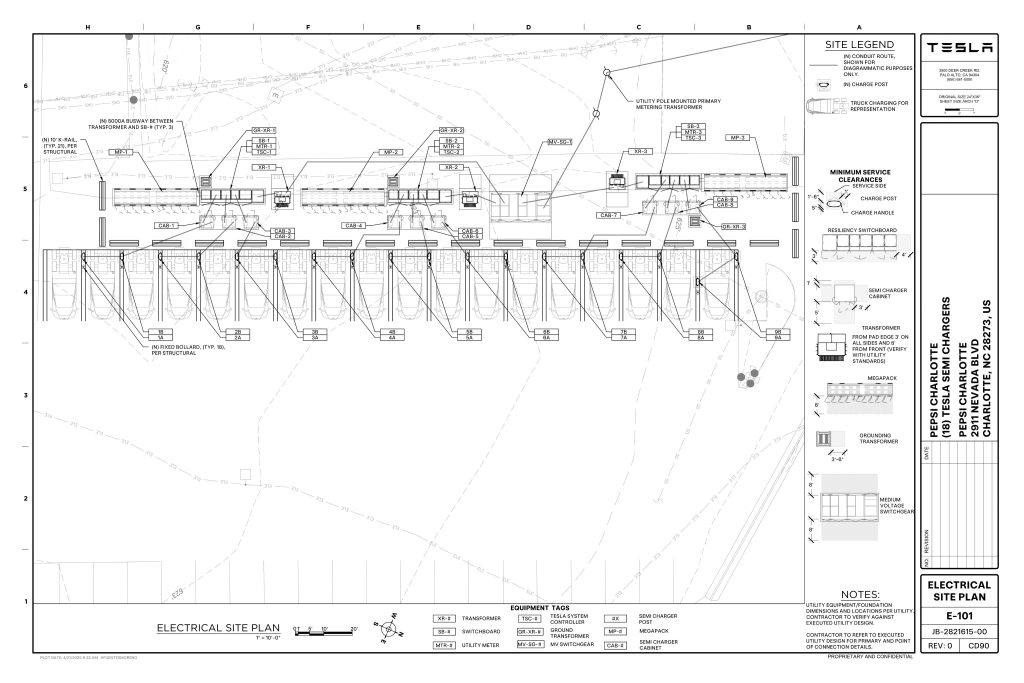
Credit: PepsiCo (via MarcoRPi1 on X)
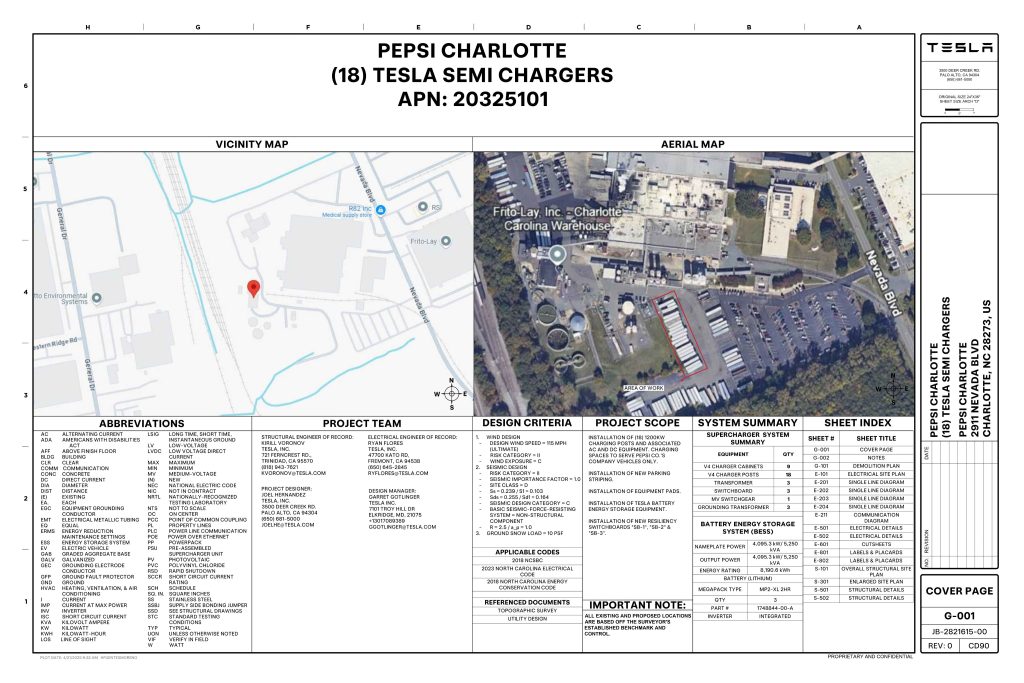
Credit: PepsiCo (via MarcoRPi1 on X)
READ MORE ON THE TESLA SEMI: Tesla to build Semi Megacharger station in Southern California
PepsiCo’s Tesla Semi fleet, other Megachargers, and initial tests and deliveries
PepsiCo was the first external customer to take delivery of Tesla’s Semis back in 2023, starting with just an initial order of 15. Since then, the company has continued to expand the fleet, recently taking delivery of an additional 50 units in California. The PepsiCo fleet was up to around 86 units as of last year, according to statements from Semi Senior Manager Dan Priestley.
Additionally, the company has similar Megachargers at its facilities in Modesto, Sacramento, and Fresno, California, and Tesla also submitted plans for approval to build 12 new Megacharging stalls in Los Angeles County.
Over the past couple of years, Tesla has also been delivering the electric Class 8 units to a number of other companies for pilot programs, and Priestley shared some results from PepsiCo’s initial Semi tests last year. Notably, the executive spoke with a handful of PepsiCo workers who said they really liked the Semi and wouldn’t plan on going back to diesel trucks.
The company is also nearing completion of a higher-volume Semi plant at its Gigafactory in Nevada, which is expected to eventually have an annual production capacity of 50,000 Semi units.
Tesla executive teases plan to further electrify supply chain
News
Tesla sales soar in Norway with new Model Y leading the charge
Tesla recorded a 54% year-over-year jump in new vehicle registrations in June.
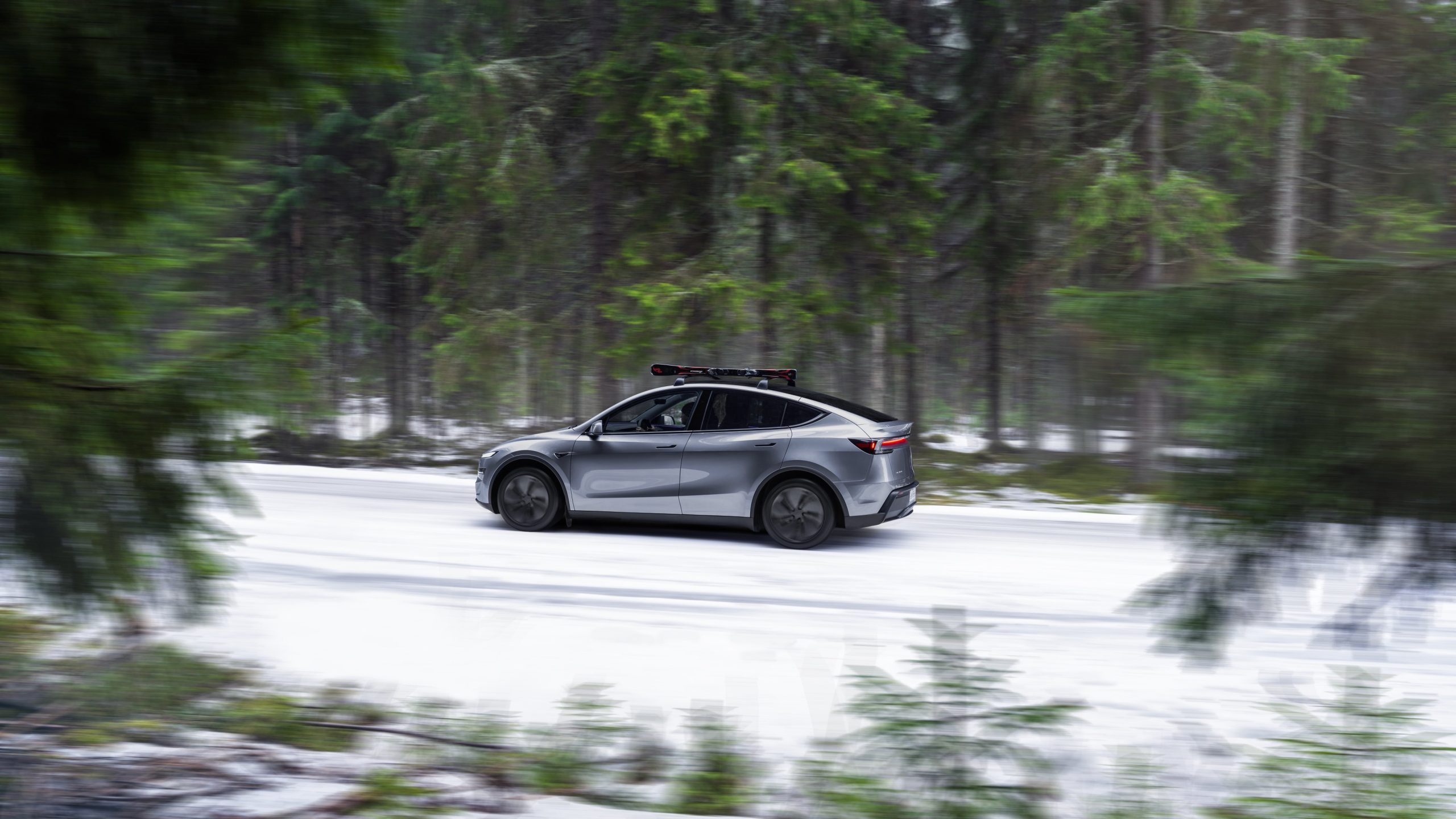
Tesla is seeing strong momentum in Norway, with sales of the new Model Y helping the company maintain dominance in one of the world’s most electric vehicle-friendly markets.
Model Y upgrades and consumer preferences
According to the Norwegian Road Federation (OFV), Tesla recorded a 54% year-over-year jump in new vehicle registrations in June. The Model Y led the charge, posting a 115% increase compared to the same period last year. Tesla Norway’s growth was even more notable in May, with sales surging a whopping 213%, as noted in a CNBC report.
Christina Bu, secretary general of the Norwegian EV Association (NEVA), stated that Tesla’s strong market performance was partly due to the updated Model Y, which is really just a good car, period.
“I think it just has to do with the fact that they deliver a car which has quite a lot of value for money and is what Norwegians need. What Norwegians need, a large luggage space, all wheel drive, and a tow hitch, high ground clearance as well. In addition, quite good digital solutions which people have gotten used to, and also a charging network,” she said.
Tesla in Europe
Tesla’s success in Norway is supported by long-standing government incentives for EV adoption, including exemptions from VAT, road toll discounts, and access to bus lanes. Public and home charging infrastructure is also widely available, making the EV ownership experience in the country very convenient.
Tesla’s performance in Europe is still a mixed bag, with markets like Germany and France still seeing declines in recent months. In areas such as Norway, Spain, and Portugal, however, Tesla’s new car registrations are rising. Spain’s sales rose 61% and Portugal’s sales rose 7% last month. This suggests that regional demand may be stabilizing or rebounding in pockets of Europe.
-

 Elon Musk2 weeks ago
Elon Musk2 weeks agoTesla investors will be shocked by Jim Cramer’s latest assessment
-

 Elon Musk2 days ago
Elon Musk2 days agoxAI launches Grok 4 with new $300/month SuperGrok Heavy subscription
-

 Elon Musk4 days ago
Elon Musk4 days agoElon Musk confirms Grok 4 launch on July 9 with livestream event
-

 News1 week ago
News1 week agoTesla Model 3 ranks as the safest new car in Europe for 2025, per Euro NCAP tests
-

 Elon Musk2 weeks ago
Elon Musk2 weeks agoA Tesla just delivered itself to a customer autonomously, Elon Musk confirms
-

 Elon Musk1 week ago
Elon Musk1 week agoxAI’s Memphis data center receives air permit despite community criticism
-

 News2 weeks ago
News2 weeks agoXiaomi CEO congratulates Tesla on first FSD delivery: “We have to continue learning!”
-

 News2 weeks ago
News2 weeks agoTesla sees explosive sales growth in UK, Spain, and Netherlands in June


